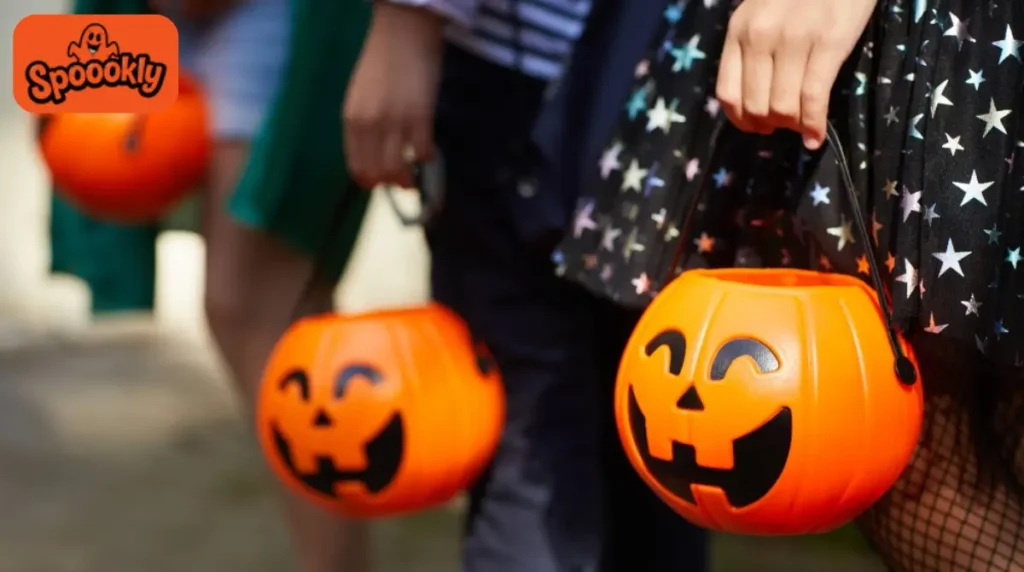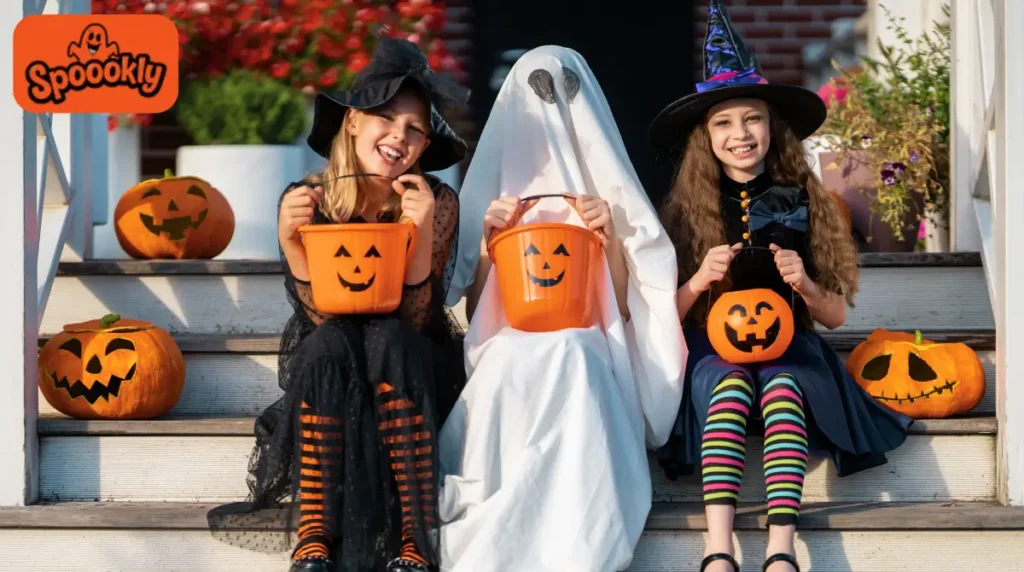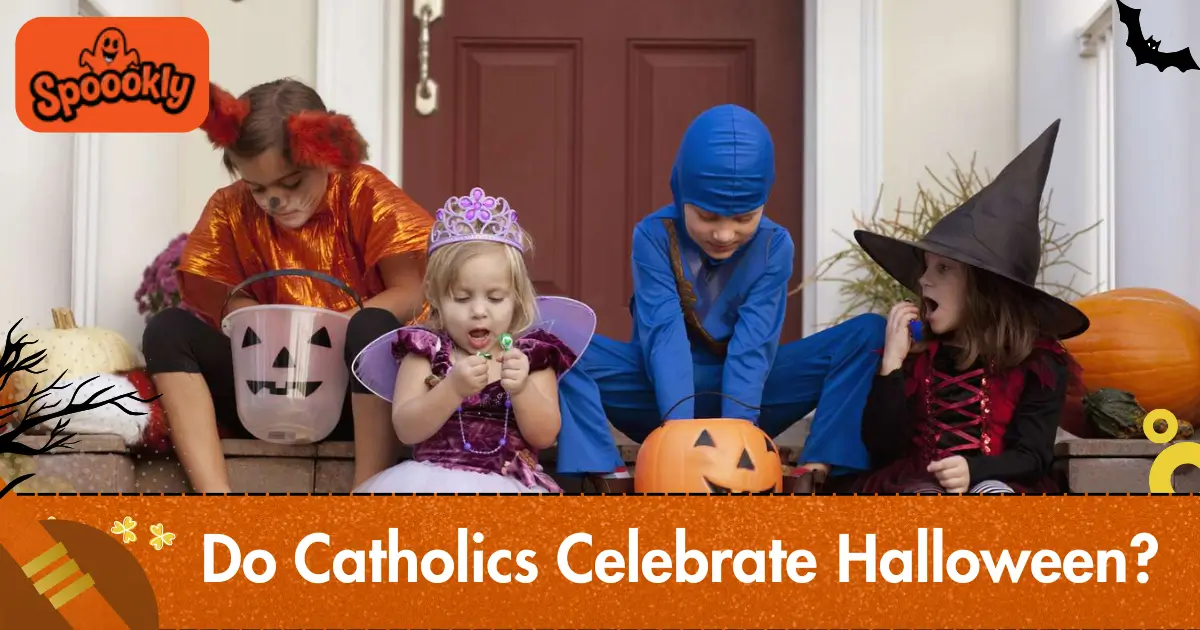When people ask whether Catholics celebrate Halloween, the answer is yes but not always in the way the secular world does.
The Catholic faith connects Halloween with something much older and deeper: the vigil of All Saints’ Day. This means Catholics can celebrate Halloween, but the focus should be spiritual rather than spooky.
Halloween as All Hallows’ Eve
Halloween is short for “All Hallows’ Eve.” In Catholic tradition, a vigil is the evening before a holy day. On October 31, Catholics prepare for All Saints’ Day on November 1, which honors every saint, known and unknown.
This is followed by All Souls’ Day on November 2, when the Church prays for the departed. Together, these three days form Allhallowtide, a sacred time in the Catholic calendar.
For Catholics, the point of Halloween is not horror movies or haunted houses. Instead, it is about remembering the saints and reflecting on the hope of eternal life.
How the Tradition Began
The Catholic Church officially established All Saints’ Day in the early centuries to honor martyrs and saints.
By the 9th century, Pope Gregory IV extended the celebration to the universal Church, fixing the date on November 1. That made October 31 the vigil, or holy evening, now known as Halloween.
This religious background is why Catholics often argue that Halloween “belongs” to the Church before it became commercial. The vigil was a night of prayer, reflection, and preparation, not candy overload.
The Role of Allhallowtide
Allhallowtide is more than just Halloween. It is a three-day remembrance of heaven, purgatory, and the afterlife.
- October 31: All Hallows’ Eve (Halloween), the vigil before the feast.
- November 1: All Saints’ Day, honoring the holy men and women of God.
- November 2: All Souls’ Day, dedicated to prayers for the faithful departed.
This period reminds Catholics of the “last things”: death, judgment, heaven, and hell. Far from being a night of fear, Halloween in this light becomes a time of spiritual reflection.

What About Pagan Roots?
Critics often point to Halloween’s link with Samhain, the Celtic festival marking the end of harvest and the start of winter. It was a time when people believed the boundary between the living and the dead was thin.
Catholic missionaries, however, often absorbed local customs and reshaped them with Christian meaning.
Instead of rejecting traditions, the Church gave them a new focus. Lighting candles, visiting graves, or wearing costumes took on new forms under Christian influence.
So, while Halloween does have cultural layers from pre-Christian Europe, the Catholic Church redefined it through the lens of faith in Christ and the saints.
Does the Church Officially “Celebrate” Halloween?
Here’s where things get specific. The Catholic Church does not recognize Halloween as a separate liturgical feast. The official calendar highlights All Saints’ Day and All Souls’ Day. October 31 is only important as the vigil for November 1.
That said, the Church does not ban Catholics from cultural Halloween customs. What it does warn against are practices tied to the occult, superstition, or anything that glorifies evil. A saint costume is fine. A séance is not.
Catholic Approach to Halloween
| Aspect | Catholic View |
|---|---|
| Halloween as Vigil | Connected to All Saints’ Day, not an independent feast |
| Costumes | Saints, angels, biblical figures encouraged; demonic themes discouraged |
| Trick-or-Treating | Acceptable if done in moderation and without promoting fear or superstition |
| Occult Practices | Strongly rejected by Catholic teaching |
| Spiritual Reflection | Prayer, Mass, and remembrance of saints and souls are central |
Why Some Catholics Are Divided
Not all Catholics treat Halloween the same way. Some families avoid it completely because of its pagan connections or its modern focus on darkness. Others embrace it, but reshape the holiday with Catholic symbols and teachings.
For example, parishes may hold All Saints’ Day parties, where children dress as their favorite saint instead of horror characters. Families might attend evening Mass on October 31 before joining community activities.
The bottom line: the Catholic Church leaves room for discernment. Catholics can celebrate Halloween, but they should do it with a Christian spirit.
How Catholics Celebrate Halloween in Practice?
Now that we’ve seen the history and Church teaching, let’s talk about how Catholics actually celebrate Halloween today. The short answer is: with faith, fun, and a little discernment.
Spiritual Practices on October 31
For Catholics, the spiritual side of Halloween matters most. October 31 is a vigil, so the evening can be marked by prayer and reflection.
Many Catholics attend vigil Mass or evening prayer, preparing for All Saints’ Day. Others light candles in honor of saints or departed loved ones. Families sometimes pray the rosary together, offering intentions for souls in purgatory.
This keeps the focus on what Halloween really is: a doorway into Allhallowtide.
Costumes with a Catholic Twist
Costumes are the most visible part of Halloween, and Catholics approach them with creativity. Instead of zombies or demons, many families choose:
- Saint costumes (St. Francis, St. Joan of Arc, St. Michael the Archangel)
- Biblical characters (Noah, Moses, Mary, the apostles)
- Angels or symbolic figures of light and virtue
This doesn’t mean Catholics must avoid all “fun” costumes. But the Church reminds us to avoid glorifying evil, violence, or witchcraft. Dressing like a superhero or historical figure is fine, but satanic symbols? Not so much.
Catholic Costume Guide
| Costume Type | Good Choice? | Why |
|---|---|---|
| Saint or Angel | Yes | Reflects faith and Christian tradition |
| Bible Character | Yes | Connects to Scripture and history |
| Funny/Silly (Pumpkin) | Usually | Innocent fun, no spiritual harm |
| Witch/Demon/Occult | Avoid | Linked with practices rejected by Church |
| Violent/Gory Themes | Avoid | Contradicts Catholic values |
Trick-or-Treating and Candy
Should Catholics go trick-or-treating? The Church says yes, with moderation. Trick-or-treating itself isn’t sinful. It’s a neighborhood tradition, and it can even become a way of sharing joy.
Some Catholic families attach holy cards, small blessings, or uplifting messages to the candy they hand out. This turns trick-or-treating into something with spiritual meaning, not just sugar overload.
The key is balance: enjoy the fun, but don’t forget the faith.
Parish and Community Celebrations
Parishes often host their own Halloween or All Saints’ events. These give families a safe and faith-filled alternative to secular parties. Common examples include:
- All Saints’ parades, where kids dress as saints and share a short story about them.
- “Night of Light” events, popular in Europe, which focus on prayer and light as symbols of hope.
- Trunk-or-treat gatherings in church parking lots, decorated with Bible themes instead of horror.
These events show that Halloween can be joyful and spiritual at the same time.
What Catholics Avoid on Halloween
The Church is clear on one point: avoid anything tied to the occult or superstition. This includes:
- Fortune-telling or séances
- Games that invite spirits
- Costumes that glorify evil or violence
- Excessive fear-based activities that distort the meaning of the vigil
The Catholic view isn’t to reject fun. It’s to keep fun grounded in faith.
Cultural Variations Around the World
Not all Catholic communities celebrate Halloween the same way. Local culture often shapes the observance.
- United States and Canada: Trick-or-treating and costumes are popular, with many parishes offering saint-themed alternatives.
- Latin America: The focus is often on Día de los Muertos (Day of the Dead), with visits to cemeteries, altars, and prayers for the dead.
- Europe: In some countries, Catholics emphasize the vigil Mass and cemetery visits over costumes and candy.
- Philippines: Families combine Halloween customs with long traditions of lighting candles and praying for souls.
This shows how flexible Halloween can be when tied to Catholic culture.
Catholic Halloween Practices
| Country/Region | Typical Catholic Practice |
|---|---|
| USA/Canada | Trick-or-treating, saint costumes, parish events |
| Latin America | Day of the Dead altars, cemetery visits, prayers |
| Europe | Vigil Mass, lighting candles, family gatherings |
| Philippines | Extended cemetery visits, candles, community prayers |

Why Catholic Halloween Matters Today
Modern culture often strips Halloween of its Christian roots. For Catholics, celebrating Halloween faithfully is a way to reclaim it.
By focusing on saints, prayer, and family-friendly traditions, Halloween becomes more than a night of costumes. It becomes a reminder of heaven, the afterlife, and hope in Christ.
Arguments, Tips, and Final Word on Catholics and Halloween
By now, it’s clear that Catholics can celebrate Halloween. Still, the question often sparks debates. Some worry it’s too pagan. Others say it’s too commercial.
Common Arguments Against Catholics Celebrating Halloween
“Halloween is Pagan”
Yes, Halloween overlaps with Celtic Samhain. But the Catholic Church reframed the date into a vigil for All Saints’ Day. Just like Christmas absorbed some winter customs, Halloween was “baptized” with Christian meaning.
“Halloween Glorifies Evil”
It can but it doesn’t have to. Dressing as a demon or practicing occult rituals is against Catholic faith. But dressing as a saint, carving a cross into a pumpkin, or handing out candy with a prayer attached? That celebrates light, not darkness.
“It’s Too Secular Now”
Modern Halloween is full of candy sales, scary movies, and marketing. True. But Catholics can choose how to celebrate. Parishes hosting All Saints’ events or families attending vigil Mass show how faith can shape the night.
Practical Tips for a Catholic Halloween
Want to celebrate Halloween without losing the Catholic meaning? Here are some ideas:
- Start with prayer: Attend vigil Mass or say a family rosary.
- Choose faith-friendly costumes: Saints, angels, or even fun, innocent characters.
- Make trick-or-treat meaningful: Add saint cards or positive notes with the candy.
- Decorate with light: Pumpkins, candles, and crosses instead of occult imagery.
- Teach kids the history: Share the meaning of All Saints’ and All Souls’ Days.
Sample Catholic Family Halloween Schedule
| Time | Activity |
|---|---|
| Morning | Share saint stories with children |
| Afternoon | Carve pumpkins with crosses or Christian symbols |
| Evening | Attend vigil Mass or family prayer |
| After Mass | Trick-or-treat in neighborhood with saint costumes |
| Night | Light candles at home for saints and departed loved ones |
This keeps the day joyful but still rooted in faith.
Regional Variations and Why They Matter
Catholics worldwide shape Halloween differently. In Mexico, families set up Día de los Muertos altars. In Europe, visiting graves is more common than costumes. In the U.S., costumes dominate, but parishes often balance it with prayer.
This diversity shows Catholicism’s adaptability. Halloween doesn’t have one “right” way, it reflects local culture while staying rooted in Christian belief.
Conclusion
Yes, Catholics celebrate Halloween but with faith, balance, and purpose. The Church doesn’t mandate costumes or candy. It calls us to use the vigil of All Saints’ Day as a chance to remember heaven, honor the saints, and pray for the dead.
Halloween doesn’t need to be scary. For Catholics, it’s a celebration of light, life, and hope beyond the grave. Whether through saint costumes, family prayer, or parish events, Halloween can be both fun and holy.
FAQs
Yes, as long as it’s done in moderation and without glorifying evil. Families can even make it faith-filled with saint cards or prayers.
The Church advises against demonic or occult costumes. Fun or silly scary costumes (like a cartoon ghost) may be fine, but discernment is key.
It’s a Catholic event focused on light, prayer, and celebration of All Saints, often used as a faith-centered alternative to secular Halloween parties.
Its date overlaps with Samhain, but the Church redefined it as All Hallows’ Eve, part of the Allhallowtide triduum.
Views differ. Some Protestant groups avoid it, while others celebrate with fall festivals. Catholics typically reclaim it through faith practices.

